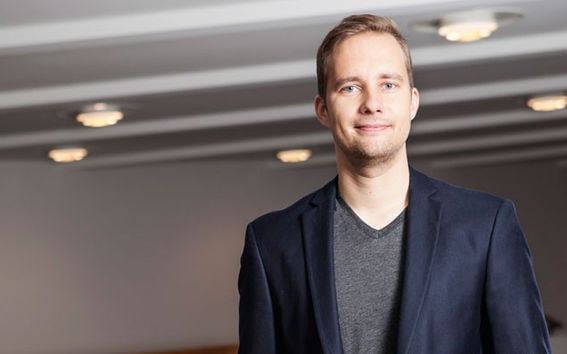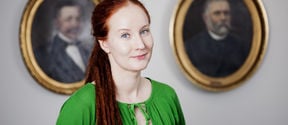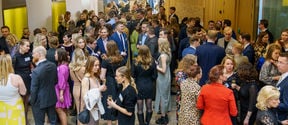Professor Antti Oulasvirta uses computational science and psychology to improve user interfaces

Professor Antti Oulasvirta wants to develop information technology with regard to usability and user experience.
'Recent Internet development has turned user interfaces into something that has a major impact on quality of life. For example, Americans spend an astounding 11 hours per day with digital media. Even tiny improvements in interface design can have an amazing cascade effect,' says Oulasvirta.
Oulasvirta is a cognitive scientist who combines information processing science and mathematical psychology in his work.
'Interface design is an exceptional branch of information technology because the person is simultaneously the target of research and the indicator of its quality. It's a mistake to assume that interface design could be solved by information processing or engineering science alone, because it also requires input from social and behavioural sciences,' explains Oulasvirta.
What is the best possible interface?
Oulasvirta uses computational sciences, such as optimisation methods, when designing interfaces. This approach is a perfect fit for engineering fields.
'The key difference in relation to other groups in my area is the fact that rather than designing the interfaces element by element ourselves, we look for the best algorithmic solution,' says Oulasvirta.
Optimisation methods apply mathematical models of human behaviour in order to make design decisions.
'We use mathematical models of basic behavioural phenomena, such as human perception, attention, learning, decision-making, experience, biomechanics, and motor control. These models can, for example, allow the optimiser to determine how long a user would look for a command in a certain menu system,' explains Oulasvirta.
A computational approach provides significant benefits. Oulasvirta talks about a revolution in interface design, which is generally considered to be an 'automated' field.
'Algorithmically, we can go through millions of interface designs. The quality of results can be better than that of human designers. Unlike humans, we can even find the so-called global optimum, which is the best possible user interface. And we can also determine how far any given interface is from the optimum,' says Oulasvirta.
He says that this kind of information has great value in information technology, where an incredible amount of unfocused human work hours on spent on improving interfaces without achieving any notable results.
New results in optimising keyboards
One of the research targets for Oulasvirta's group is the very familiar keyboard.
'The most commonly used Qwerty keyboard was already invented in the 1800s. However, it is not optimal for most languages and purposes,' states Oulasvirta. 'It's absurd that we're still using it today!'
Oulasvirta's research group is optimising the keyboard so that it changes according to the language being used, terminal device or task (such as writing an SMS message). Keyboard optimisation has been recognised since the 1920s, but for the first time it's now possible to find the global optimum for every language and terminal device.
Earlier, his research group successfully solved partial problems related to keyboards, for example, by developing a keyboard for mobile devices that can be operated using both thumbs. The KALQ keyboard is divided onto both sides of the screen. It has a few thousand users, mostly in the business world. Learning to use a new keyboard usually takes an average of 10 hours.
'KALQ is significantly more efficient that Qwerty, but the problem is learning. 'For a normal tablet user, it's not worth investing the time required for learning unless it's being used as the main tool for work,' says Oulasvirta.
The main goals of the research are not keyboards, however. The broader target involves improving the most commonly used user interfaces.
'Now, for example, we're studying the application menus, web pages, search engines, and browsers of smart phones and the gestural interfaces that are familiar from console games (such as Kinect and Wii).
European Research Council funding 2015–2020
At the end of 2014, Oulasvirta received an ERC Starting Grant worth EUR 1.5 million from the European Research Council (ERC) to support his research. The Aalto University group currently includes one doctoral student and a postdoc, who will be joined by another postdoc researcher in March 2015.
Along with research, Oulasvirta focuses on teaching and producing teaching material.
'Teaching is an important part of my work. The field I represent has existed for roughly 30 years and as a result it doesn't have any proper course books yet. Since the computation approach that I take is a marginal area in my field, I have to produce a lot of material myself,' he explains with a sigh.
- Published:
- Updated:
Read more news

Teamwork First-Aid Kit supports students in project-based courses
This online resource offers tools to support student teams throughout project courses.
Camilla Hollanti elected as a member of Finnish Academy of Science and Letters
Camilla Hollanti leads a prominent research group on applications of algebra and number theory. The central topic of her research is to apply the methods of algebra and number theory to problems encountered in telecommunications. Applications include wireless communication.
Aalto ARTS alum Vidha Samya’s artwork featured at the Venice Biennale 2024
The Pavilion of Finland presents ‘The pleasures we choose’ at the 60th International Art Exhibition – La Biennale di Venezia until 24 November 2024.